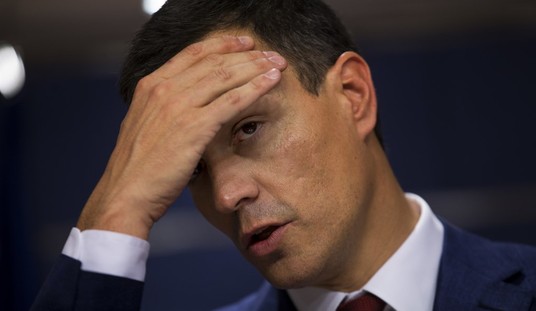The late Gene Siskel once said that the test of a good movie is whether it is more interesting than simply watching a documentary about its cast having lunch. Does that same basic concept work in print form? A pair of recent articles on two less-than-successful films from Universal made during Hollywood’s fallow post-Easy Riders pre-Star Wars period are far more enjoyable than the actual films they’re describing.
First up, The Digital Bits DVD and Blu-Ray review site looks at the 45th anniversary of Bob Fosse and Shirley MacLaine’s 1969 musical Sweet Charity, with an emphasis on its roadshow engagements — which is a reminder of what was lost, for better or worse, with the coming of Jaws, Star Wars, and the modern film distribution method:
Two months after sneak-preview screenings in Phoenix and Chicago, Sweet Charity had its world premiere in Boston on February 11, 1969 (several weeks ahead of opening in New York and Los Angeles). Although the Boston engagement played the Saxon (and is identified as such in the engagements listing below), the premiere event was held simultaneously at the Saxon and Music Hall.
The roadshow engagements of Sweet Charity were big-city exclusives that preceded general-release exhibition. Out of hundreds of films released domestically during 1969, Sweet Charity was among only seven given deluxe roadshow treatment. Much like a stage show, they featured reserved seating, an advanced admission price, were shown an average of only ten times per week, and included an overture, intermission, entr’acte and exit music. Many of the roadshow presentations of Sweet Charity were screened in a 70-millimeter (blow-up) print with six-track stereophonic sound and were promoted as “70mm/Panavision with Full Dimensional Sound.” Souvenir program booklets were sold, as well.
What follows is a (work in progress) list of Sweet Charity‘s domestic theatrical “hard ticket” roadshow engagements, arranged chronologically by date of premiere. The duration of the engagements has been included for some entries to illustrate how unsuccessful the film was compared to most 1960s era roadshow releases, especially in comparison to Funny Girl and The Sound of Music.
* * * * * * * *
Coate: Would the roadshow exhibition concept work today?
Hall: No, because audiences now expect instant access, to which the slow, staggered, exclusive release pattern is antithetical. Studios also desire rapid release because of the threat of piracy.
Holston: I doubt it. It is now possible to purchase tickets in advance for the initial showings of some films, but those tickets are not for specific seats and you don’t get deluxe programs and overtures and intermissions. Ever since Billy Jack and Jaws, people are used to seeing a new film immediately somewhere in their vicinity. Instant gratification. Today no one’s going to drive into a city to see a movie that won’t come to the suburbs for months or a year — if it’s successful. That’s what happened with the likes of West Side Story, Cleopatra and The Sound of Music. Plus, there are hardly any huge art deco movie theaters left in inner cities. As I researched my book I realized that roadshows and movie palaces existed symbiotically. The roadshow depended on palatial theaters—and big premieres. Not to mention concentration of people in cities. Suburbs, cars, and mall theaters helped kill the “experience.”
Kennedy: I don’t think so. Roadshows played hard to get, beginning in big cities on single screens. Today we know most all movie will be available in many forms via the home markets, TV, streaming, etc. Roadshows were based on limited opportunity to see them before they disappeared into the vaults. Opening a huge movie on a handful of screens and withholding it from a larger audience for weeks or months has become too risky. When roadshows were not well received, word of mouth killed them. Now with thousands of screens showing the same “blockbuster” in its opening weekend, audiences are lured in before negative word of mouth spreads. Maybe that’s changing, too. Nowadays audiences text and tweet “this movie sucks” far and wide before its first matinee is over.
Wikipedia notes that Sweet Charity “cost $20 million to make, but made only $8 million at the box office, which nearly sank Universal Pictures.”
As books such as Peter Biskind’s Easy Riders Raging Bulls, and The Studio by John Gregory Dunne documented, Hollywood studios tried to constantly repeat the blockbuster success of the Sound of Music throughout the rest of the 1960s, with ever-diminishing results. During that period a group of Young Turks infiltrated the system and influenced by both the French Nouvelle Vague, and their own experiences on Roger Corman’s B-movies, began producing deliberately cruder and more violent fare, such as Bonnie and Clyde and Easy Rider, eventually to the point where Steven Spielberg’s Jaws, George Lucas’ Star Wars and their combined effort, Raiders of the Lost Ark were B-movies and ’30s-style Republic Serials done on a grand scale, with state of the art special effects.
Found via Kathy Shaidle, this Turner Classic Movies article on Universal’s 1977 film disaster film Rollercoaster makes two key observations: the first is that Rollercoaster is the exact same plot as Universal’s previous disaster film, The Hindenberg. (Same writers, too — Richard Levinson and William Link, who created the Columbo TV series for Universal.) The other observation is that Universal’s disaster films were the last redoubt of the Hollywood studio system that began in the 1920s and ’30s:
The disaster films of the 1970s marked the death rattle of the Hollywood studio system and served as the establishment’s rebuttal to the youthful excesses and longueurs of the New Hollywood. While Robert Altman, Hal Ashby, Martin Scorsese, Francis Ford Coppola, and Peter Bogdanovich were breaking the rules, journeymen such as Ronald Neame, John Guillermin, Mark Robson, and Jack Smight were put to work making The Poseidon Adventure (1972), The Towering Inferno (1974), Earthquake (1974), and Airport 1975 (1974). Disaster pictures were not only a response to such personal, indulgent films as Harold and Maude (1971), The Last Picture Show (1971), and McCabe and Mrs. Miller (1971) but served as reminders of how the studio system worked best, as a well-oiled machine, with a capable director communicating with equal dexterity between his actors and technical staff, while honoring the dictums and caprices of the front office. Special effects and big box craftsmanship to one side, the allure of the disaster cycle lay in its revolving cast of aging Hollywood A-listers – Charlton Heston, Paul Newman, Steve McQueen, Shelley Winters, Gloria Swanson, James Stewart, William Holden, Joseph Cotten, Dana Andrews – whose onscreen deaths (or the threat thereof) added instant production value.
Another of these selfless efficiency directors was James Goldstone, whose seminal work was in episodic television. (In 1966, Goldstone helmed the second pilot for Gene Roddenberry’s Star Trek, the one that sold.) The son of an entertainment attorney and talent agent (whose clients included Elizabeth Taylor and James Thurber), Goldstone directed few feature films, and his presence in a credit crawl invariably meant the producers wanted to save money by employing someone who could deliver the goods while creating as little trouble as possible.
The Hollywood studios had enough troubles in the late 1960s and pre-Star Wars 1970s, to the point where to some in the movie industry, it very likely looked as if the genre wouldn’t survive. (MGM effectively went out of business during that period.) I think they can be forgiven for wanting to work with craftsmen “who could deliver the goods while creating as little trouble as possible.”










Join the conversation as a VIP Member